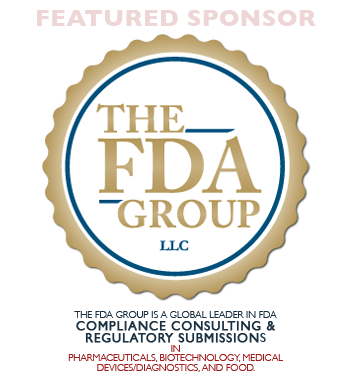What To Know About Inadequate Training of Personnel In Relevant Procedures Or Quality Control Measures
June 4th, 2025 // 4:07 pm @ jmpickett
We have been reviewing the most common FDA 483 violations in the last five years. Another common 483 violation is inadequate training of personnel in relevant procedures or quality control measures – 21 CFR 211.25(a) Personnel Qualifications and Personnel. FDA records state there have been 55 FDA 483 violations for inadequate employee training since 2021. Also, we noted the following FDA 483 training and personnel related observations from 2018:
| Reference Number | Short Description | Long Description | Frequency (FY2018) |
| 21 CFR 211.25(a) | Training, Education, Experience overall | Employees engaged in the [manufacture] [processing] [packing] [holding] of a drug product lack the [education] [training] [experience] required to perform their assigned functions. Specifically, *** | 47 |
| 21 CFR 211.25(a) | Training—operations, GMPs, written procedures | Employees are not given training in [the particular operations they perform as part of their function] [current good manufacturing practices] [written procedures required by current good manufacturing practice regulations]. Specifically, *** | 41 |
| 21 CFR 211.25(a) | GMP Training Frequency | GMP training is not conducted [on a continuing basis] [with sufficient frequency] to assure that employees remain familiar with CGMP requirements applicable to them. Specifically, *** | 22 |
| 21 CFR 211.25(c) | Inadequate number of personnel | The number of qualified personnel is inadequate to [perform] [supervise] the [manufacture] [processing] [packing] [holding] of each drug product. Specifically, *** | 9 |
| 21 CFR 211.25(b) | Supervisor Training/Education/Experience | Individuals responsible for supervising the [manufacture] [processing] [packing] [holding] of a drug product lack the [education] [training] [experience] to perform their assigned functions in such a manner as to assure the drug product has the safety, identity, strength, quality and purity that it purports or is represented to possess. Specifically, *** | 7 |
Drug company employees play a vital role in ensuring your company is compliant with cGMPs. Untrained pharmaceutical personnel often do not follow important procedures, which increases the chance of non-compliance. FDA requires pharmaceutical companies to offer comprehensive training on cGMPs, safety guidelines, and FDA regulatory requirements.
The regulation states that employees need to qualified and trained as follows:
- Personnel shall have education, training, and experience, or any combination thereof, to enable that person to perform the assigned functions
- Personnel are trained to adequately perform their assigned responsibilities
- Training shall be conducted by qualified individuals
- Training shall be conducted on a continuing basis
- Training shall be documented.
Many training-related 483 observations involve lack of documented training records for employees; failure to offer refresher courses for cGMP updates, and workers are unaware of SOPs.
How To Address Personnel and Resource Assessment Planning
It’s clear that FDA regulators want to assure enough drug company personnel are hired to do tasks and fulfill critical duties to meet cGMPs. Also, FDA investigators want ensure that the team has the skills and qualifications to do the work.
Given these FDA expectations, drug companies must be sure that all employees are qualified and educated to perform cGMP tasks they are given. The training and education that QC personnel receive should include step-by-step instruction into the quality outcomes of the processes in the company. Inspectional data from FDA also shows that your company needs to keep a QC team that is the correct size to meet compliance requirements.
Whether your firm needs to solve a long-term personnel problem or need to perform a staffing assessment, we offer the following steps to understand what your team needs.
Gap Analysis in Your Quality System
We find that quality issues at pharmaceutical companies come down to personnel staffing and training problems. Perform a gap analysis to make sure that you understand all of your quality system needs and the personnel needed to achieve them. Study every flaw found in your gap analysis and note when there is a staff resource issue contributing to the situation.
Use A Competency Or Skill Matrix To Pinpoint Needs
A competency or skill matrix is a valuable tool to map required and needed skills for your team or an individual employee. This informational grid provides a visual of the needed and available skills on your team and links them to the needs of the system in a way that makes it simple to see gaps and nees.
You can create this matrix by noting the roles and duties of your quality team that must be satisfied to produce a compliant product. Next, review your personnel and their skills. Apply your findings to the matrixs to pinpoint strengths and weaknesses. Once this is done, it should be easy to see personnel and training gaps.
Decide If Resource Problems Can Be Solved With Hiring Or Training
Now you understand the needs in your company’s personnel to maintain compliance and create the best drug product. Next, how will you address them? The best course of action depends on your specific situation. For instance, if better quality system training seems to be the solution, ensure that the employees’ schedule allows for the training needed, as well as the greater responsibilities and duties. Always think about each workers’ workload capacity if you plan to train them.
Think About How Contracted Team Members Can Help
Maybe you need more employees to meet the gaps in your matrix. Consider hiring contracted employees to meet your training and personnel needs. This step is often a good fit for pharmaceutical companies because of more flexibility and better access to critical rsources with the skills and experience you need.


